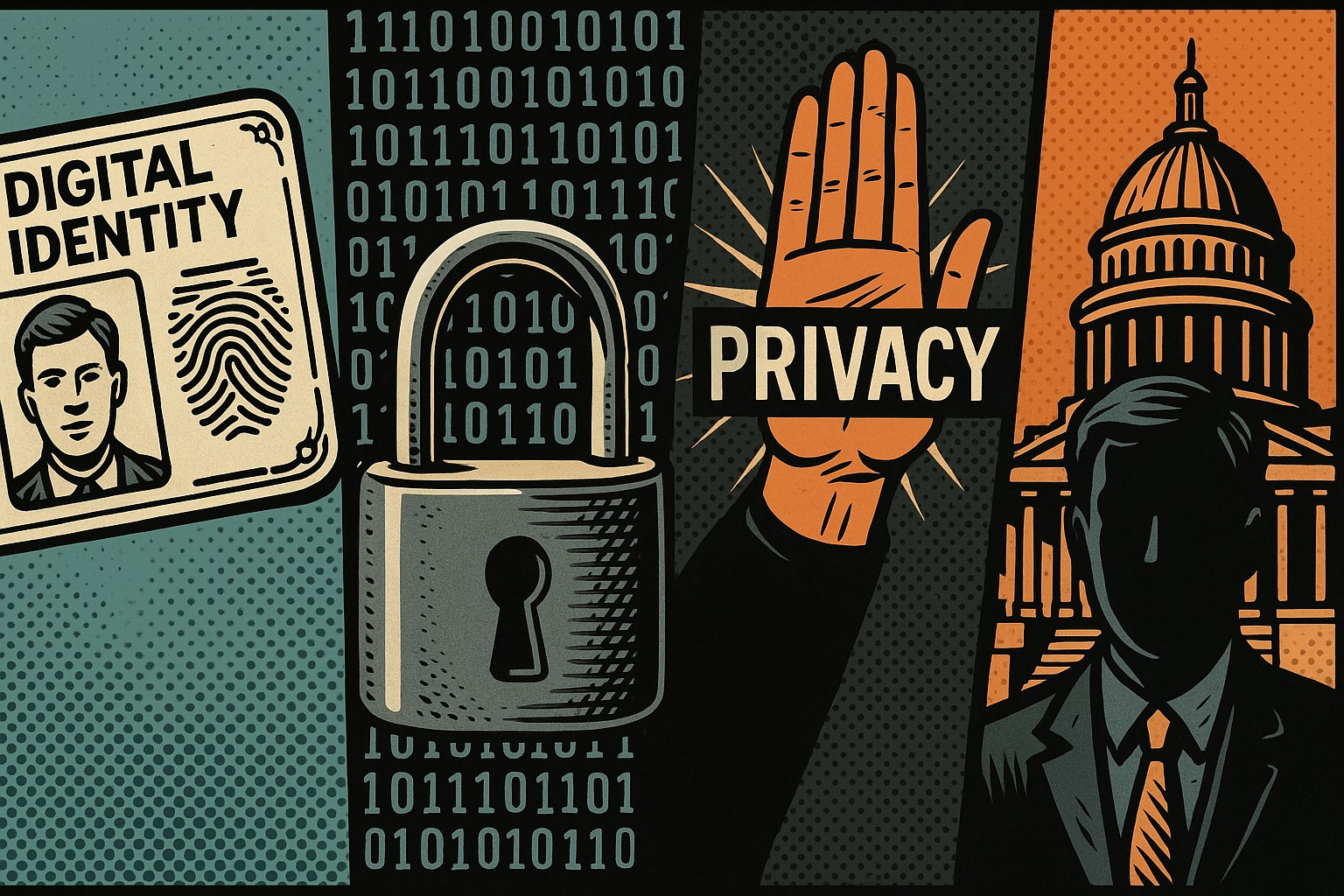
Digital identity and trust are not just political or legal questions — they are also architectural ones. The UK government’s proposed BritCard system illustrates how design choices can deeply affect security, privacy, and public confidence. DIACC argues that Canada must avoid overly centralized control and instead promote architectures where the user owns and controls their data.
BritCard: Ambition and Risks
- The UK government plans to launch BritCard, a digital identity initiative that would make identity credentials partially mandatory and create a central database of people entitled to live and work in the country.
- Critics warn that such a centrally controlled infrastructure would be a “massive target” for hackers, especially when multiple subcontractors and integration partners are involved.
- Public resistance is also strong: over 1.6 million people have already signed a petition expressing fears of “Big Brother”-style surveillance.
- Similar central identity registries have been compromised in other countries, leading to identity theft, fraud, and trust crises.
Thus, the key question is not simply whether to build a digital identity, but how to do so in a way that preserves privacy, security, and freedom.
Architecture as a Reflection of Values
DIACC stresses that architecture is not neutral — it encodes values. Several architectural choices can protect privacy by design rather than by promise:
- Cryptographically signed credentials stored on the user’s device instead of in a central database.
- Verification through cryptographic proofs, not constant queries to a national system.
- Selective disclosure, where users share only the necessary facts (for example, that they have the right to work) without revealing their full identity.
- User control — individuals decide when and to whom to present credentials and have the ability to revoke or delete them.
- These principles are already reality in systems like Estonia’s e-identity and the EU Digital Identity Wallet, which both require selective disclosure and offline verification.
- Singapore’s Singpass uses QR-based validation to minimize traceability.
Such architectures deliver efficiency and fraud prevention without compromising privacy, proving that privacy can be enforced by architecture, not just by regulation.
The Canadian Approach
Canada has deliberately avoided building a single digital identity. Instead, it relies on the Pan-Canadian Trust Framework (PCTF) — a coordination model that allows multiple credential issuers (federal, provincial, and private) to interoperate without central registries or mandatory identifiers.
The PCTF rests on four main principles:
- Federation / Multi-issuer trust — multiple issuers recognize each other under a shared framework.
- Privacy by design — data minimization, purpose limitation, selective disclosure, informed consent, and technical safeguards.
- User control — credentials are stored locally and can be revoked or withdrawn by the user.
- Voluntary use — digital credentials do not replace existing IDs, and participation remains optional.
Additionally, DIACC’s PCTF program includes independent certification of participating systems, ensuring that privacy and security guarantees are verified, not declared.
Implications and Recommendations
For governments
- Avoid central registries; require architectural privacy safeguards in procurement and policy.
- Mandate PCTF compliance and third-party certification for public-sector digital identity solutions.
For industry and technology providers
- Design systems that support verifiable credentials, selective disclosure, and user-centric control.
- Apply for PCTF certification to demonstrate compliance and transparency.
For civil society and privacy advocates
- Ensure that privacy is not only promised but technically verifiable through independent audits and open transparency.
For citizens
- Demand clarity about whether credentials are stored centrally or locally.
- Choose services that provide privacy-preserving identity options.
Challenges Ahead
- While decentralized architectures reduce attack surfaces, they introduce new complexities — particularly around interoperability and trust management among multiple issuers.
- Device-level security, social engineering, and usability remain major vulnerabilities that require continuous education and design attention.
- Political and public pressures may push governments toward simpler, less privacy-protective solutions.
- Finally, certification mechanisms must remain independent and credible — otherwise “certified trust” becomes little more than self-declaration.
Conclusion
The BritCard debate underscores a fundamental truth: how we design digital identity systems is as important as whether we build them at all. A centralized, mandatory national register poses enormous risks — to privacy, security, and the social contract itself.
Canada’s choice to pursue a decentralized, voluntary, and independently certified model shows a more sustainable path toward digital trust. Yet its success will depend on more than good intentions — it will require architectural discipline, regulatory alignment, and continuous civic engagement.
Summary by DigitalTrade4.EU
Summary by DigitalTrade4.EU
(Source: DIACC, “Learning from BritCard: Why Architecture Matters for Digital Trust and Identity”, October 3, 2025 — diacc.ca)
